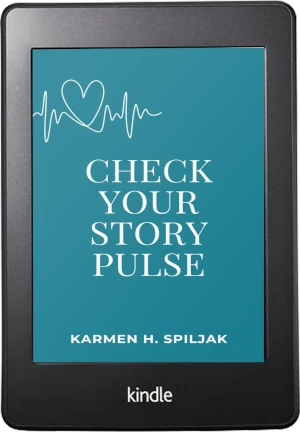Your opening pages are make-or-break territory. They’re the bouncers at the door of your story. And if the first few chapters don’t grab the reader by the collar (or at least offer them a drink and a compelling reason to stay), chances are they’ll never read it.
Agents know this. Editors know this. Netflix-trained readers definitely know this. That’s why submission guidelines almost always ask for your first 10, 30, or 50 pages. If those don’t hit, nothing else will.
And yes, it might feel unfair. But the truth is, most writers over-polish the beginning while under-delivering on story movement. As a developmental editor and book coach, I’ve seen these top five mistakes in opening chapters:
1. Starting Too Early
Writers need to marinate in their world, readers don’t. You, the author, need all the character backstory, from the childhood trauma and the failed relationships up to the reason they always carry a matchbook. But the reader? They want to show up when the match is already lit.
If your first few pages feel like watching someone clean their kitchen before they cook, it’s time to cut. The reader will want to be there when the first meal is served.
Not sure how to spot a false beginning? Read this post on where to start your story.
2. Backstory Buffet
We get it. You love your character. You know everything about them. Their favourite tea. Their worst nightmare. The exact summer they broke their wrist at theatre camp.
But you won’t want to dump all of it right at the start. Backstory is a whisper, not a lecture. Think truffle oil—used sparingly, it enhances the flavour. Used too liberally, and you can’t smell anything else. When unsure, ask: What does the reader absolutely need to know right now? Keep the rest in your pocket for later.
3. Vague Goals and Mysterious Motivations
The character’s goal is the heartbeat of your plot. Their motivation is what pumps blood through it. Without those two, your story’s nothing but a skeleton—possibly interesting to look at, but ultimately lifeless.
Even if the goal shifts later, the reader needs to care about something early on. Bonus points if the goal is emotionally charged. Survival. Love. Redemption. Revenge. Give the reader a reason to root for your protagonist—or at least to follow them into the next chapter.
4. No Story Promise = No Reader Trust
The ‘story promise’ is your unspoken contract with the reader: Here’s what kind of story you’re in for, and here’s how it’ll hurt in the best way.
It’s genre. It’s tone. It’s setup. If you’re reading a murder mystery, you expect a body in the first chapter. If it’s a rom-com, you want sparks (and conflict) to fly. That doesn’t mean being predictable—it means being intentional.
Set the expectations early. Give the reader a taste. Let them guess what’s coming.
Want to get clear on yours? Check out my deep dive on the story promise here.
5. No Narrative Drive (aka Zero Page-Turn Urge)
Narrative drive is propulsion. It’s the sneaky questions your story whispers while someone is reading it:
Why did she look at them like that?
What’s in that locked drawer?
Why do I feel like something’s about to go terribly wrong?
Curiosity will make the reader need the next page, and turn it.
Your opening chapters are the part of the story that say, ‘Trust me. This’ll be worth it.’ So hook the reader in a way they won’t be able to look away.
To find out more about narrative drive, read Lidija Hilje’s brilliant post on what it is and how it works. And if you’re not sure whether you’re lighting a fire or just setting the table, I’ve got your back.
Book an Opening Pages Review and get pro-level feedback that cuts through the fog and gets your story moving like it means it.
No fluff. Just straight-up tools, strategy, and story muscle.











